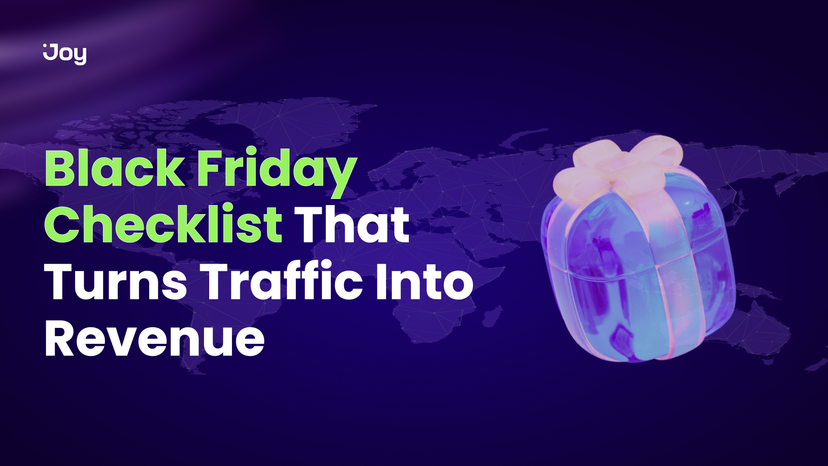Winning new customers is great, but keeping them coming back is where real growth happens. online brands need to focus on making customers happy and keeping them around. If you can’t do that, you’ll be stuck with high marketing costs and struggle to grow your business.
This article explains everything you need to know about eCommerce customer retention and, most importantly, offers 8 powerful strategies for boosting it.
Let’s dive right in!
What Is Customer Retention In Ecommerce?

Customer retention in ecommerce refers to a business’s ability to encourage existing customers to continue purchasing its products or services over time. It is a critical metric that indicates how well a company maintains its customer relationships and fosters loyalty.
The significance of customer retention in the e-commerce industry is multifaceted:
- Cost efficiency – Retaining existing customers is more cost-effective, as they are already familiar with the brand and require less persuasion.
- Higher profitability – Retained customers spend more and cost less to maintain compared to acquiring new ones.
- Brand loyalty & advocacy – Satisfied customers are more likely to recommend your store, driving organic growth.
- Increased customer lifetime value (CLV) – The longer customers stay, the more they contribute to your business.
- Competitive advantage – In a saturated market, strong retention strategies differentiate your brand and build trust.
How To Measure Ecommerce Customer Retention
To understand the health of your business and the loyalty of your customers, here are several metrics that help you track e-commerce customer retention effectively:
- Customer Retention Rate (CRR): reveals the percentage of customers who continue to shop with you over a specific period. It helps you assess how effective your efforts are at keeping customers engaged and coming back.
CRR= [ (Number of customers at the end of the period − New customers acquired during that period) / Number of customers at the start of the period ] × 100
A higher retention rate indicates strong customer loyalty and effective retention strategies. It is most effective when it aims for 40-60% or higher.
- Repeat Purchase Rate (RPR): measure the proportion of customers who make more than one purchase. This metric is a clear indicator of loyalty.
RPR = (Total Customers / Repeat Customers) × 100
A higher RPR suggests a growing base of repeat customers. Top-performing ecommerce brands maintain rates above 25-30%.
- Customer Lifetime Value (CLV) estimates the total revenue a business can expect from a single customer throughout their relationship. It provides a long-term perspective on profitability and helps prioritize high-value customers.
CLV = Average Order Value x Purchase Frequency x Average Customer Lifespan
Knowing your CLV helps you allocate marketing budgets effectively and identify your most valuable customer segments. Your CLV should exceed your Customer Acquisition Cost (CAC) by 3 to 5 times.
- Churn Rate: tracks the percentage of customers who stop purchasing from your business over a defined period. A high churn rate signals dissatisfaction or lack of engagement and pinpoints why customers leave
Churn Rate = (Customers lost during the period / Total customers at the start) x 100
A low churn rate reflects better retention and satisfaction. A low churn rate (below 5%) reflects better retention and satisfaction. Solutions like Easy Subscriptions App help reduce churn by locking in repeat purchases, sending automatic reminders, and making it easier for customers to stay subscribed.
- Net Promoter Score (NPS): gauge customer satisfaction and loyalty by asking customers how likely they are to recommend your brand to others.
It’s measured on a scale from 0 to 10:
- Promoters (9-10) are highly satisfied customers.
- Passives (7-8) are neutral and less likely to refer.
- Detractors (0-6) are unhappy and may discourage others.
NPS = % Promoters – % Detractors
A higher NPS signals strong customer advocacy and satisfaction, which can help you identify your strengths and areas for improvement. An NPS of 50+ is excellent; 70+ is world-class.
Common Challenges in E-Commerce Customer Retention
Retaining customers in the e-commerce sector presents several challenges that businesses must navigate to foster loyalty and ensure sustained growth.

It’s true that keeping customers happy in the online world comes with its own set of challenges. Here are a few common hurdles that ecommerce businesses face when it comes to customer retention:
- Price Sensitivity: Online shoppers are often looking for the best deals, and they can easily compare prices from different stores. This makes it tough to compete on price alone.
- Lack of Engagement: It’s easy for customers to get distracted online. If your website or marketing isn’t engaging, they might lose interest and go elsewhere.
- Shipping Delays or Issues: Shipping problems, such as delays or damaged packages, can negatively affect customers’ experiences and make them less likely to return.
- Lack of Personalization: Customers want to feel valued and understood. If your store doesn’t offer a personalized experience, they might not feel a connection with your brand.
- Competition: The online marketplace is crowded. It’s easy for customers to switch to a competitor if they have a better experience or find a better deal.
- Changing Customer Expectations: Customer expectations are always evolving, and it can be challenging to keep up with the latest trends and technologies to meet them.
- Poor customer service: Inadequate or unresponsive customer service can quickly erode trust and drive customers away.
- Complex return processes: Complicated or costly return procedures can discourage customers from making future purchases.
8 Strategies to Boost E-Commerce Customer Retention
Offer Exceptional Customer Service
In the e-commerce sector, where direct human interaction is limited, providing prompt and helpful support can differentiate your brand.
According to Microsoft’s State of Global Customer Service report, 96% of consumers consider customer service crucial for brand loyalty, and 82% of customers expect immediate responses to their inquiries. Richpanel also defined customer service as among the hardest-hit company functions during the COVID-19 pandemic.
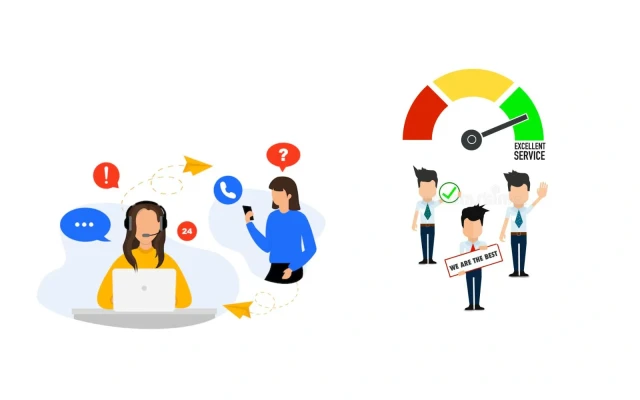
Practical tactics:
- Implement live chat, email, and phone support to address customer queries promptly.
- Hire a high-quality support agent or train them to resolve issues effectively and empathetically.
- Use chatbots to handle FAQs and escalate complex issues to human agents.
- Simplify return policies to enhance customer confidence.
- Check-in with customers post-purchase to ensure satisfaction and resolve potential concerns.
- Send automated order confirmations and shipping notifications to keep customers informed throughout their purchasing journey.
- Anticipate customer needs by communicating order status, product updates, or potential issues before they arise.
- Ensure consistent omnichannel customer service across all platforms, including social media, email, and in-store interactions.
Personalize the Customer Experience
Everyone desires their ownership; thus, personalization fosters a sense of recognition and value that addresses individual preferences and needs, encouraging customers to return. Studies show that 80% of consumers are more inclined to purchase from brands offering personalized experiences.

- Use AI to analyze customer behavior and preferences, delivering tailored product recommendations and content
- Tailor website banners, emails, and push notifications for individual customers.
- Provide discounts or promotions based on each customer segment or milestone, like birthdays or anniversaries.
- Add a personal touch with handwritten notes or custom packaging for loyal customers.
Implement a Loyalty Program
Loyalty programs go beyond offering discounts. They build a sense of community and exclusivity. When customers feel they’re earning something tangible for their loyalty, they’re more likely to return.
According to a report by Bond Brand Loyalty, 79% of consumers are more likely to shop with brands that offer loyalty programs. Moreover, 66% of shoppers claim loyalty programs increase their spending.

Practical tactics:
- Choose a loyalty program type that suits your business (e.g., point-based, cash back, referral, VIP perks).
- Offer tiered rewards to incentivize continued spending with escalating benefits (e.g., bronze, silver, gold levels).
- Provide exclusive perks for loyalty members, such as early access to product drops or private sales
- Ensure that the policy and terms are simple and intuitive for customers.
- Incorporate gamification and unique rewards to catch the customers’ taste
- Set up a comprehensive but intuitive program with an impressive design and concept.
- Launch and notice the program through multiple channels, including online and in-store.
Pro Tip: Joy is a top-rated loyalty software that makes it easy to set up points-based, VIP-tier, and referral programs. Customers can earn points for purchases and engage with the brand, redeeming them for discounts and rewards. With seamless integration and 24/7 support, Joy is an excellent choice for businesses looking to increase retention through loyalty programs.
Build a Strong Brand
An impressive brand identity isn’t just about having a cool logo or a catchy slogan—it’s about the promises you make and how consistently you deliver on them. In an era where consumers are seeking authenticity, a well-defined brand gives them a reason to choose you over competitors.
Patagonia is an excellent example of a brand that has built trust all over the world by consistently aligning its brand with environmental and social activism.

In fact, studies show that 64% of consumers believe that shared values are the primary reason they have a relationship with a brand.
Practical tactics:
- Keep your visuals, messaging, and tone of voice aligned across all platforms
- Craft a compelling narrative around your brand’s origins or mission
- Ensure products and services consistently meet or exceed customer expectations, reinforcing brand reliability
- Respond to customer feedback publicly and showcase your commitment to improvement
Use Retargeting and Email Campaigns
Retargeting and email marketing are the digital equivalent of the “gentle reminder” you might send a friend, which help nudge customers who’ve shown interest but need a little extra push to finalize the purchase.
According to WordStream, retargeting ads are 76% more likely to get clicked compared to standard display ads. Meanwhile, brands like Airbnb have effectively used email remarketing campaigns to regain interest and increase booking rates by as much as 20%.
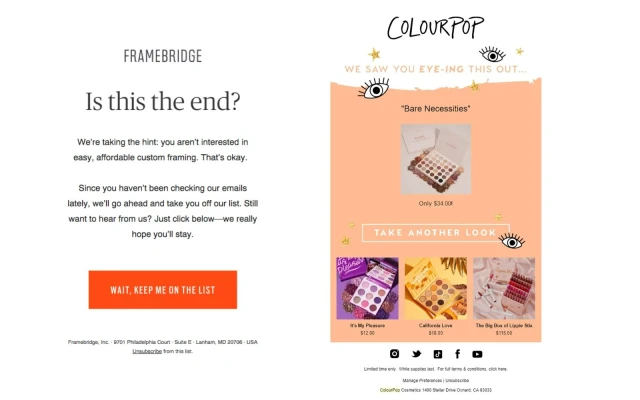
Practical tactics:
- Display ads to previous visitors showcasing products they viewed
- Send regular updates featuring new arrivals, promotions, and personalized recommendations
- Prompt customers to complete their purchases with timely email reminders, recovering potentially lost sales.
Focus on Fast and Reliable Shipping
No one loves waiting! Thus, fast and reliable shipping is now the baseline standard for e-commerce success. Long shipping times or uncertainty around delivery can sour the customer experience, but a smooth and swift process significantly elevates customer satisfaction.
A study by Semrush indicates that extra costs and fees, including shipping, are the top reason for cart abandonment. 32% of consumers would abandon their purchase if delivery times were too long.
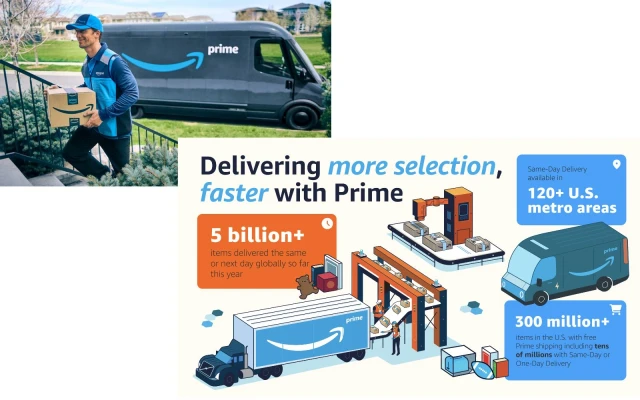
Amazon’s Prime service, with its promise of fast, free shipping, has not only reshaped customer expectations but has also contributed significantly to its high retention rates.
Practical tactics:
- Offer standard and expedited shipping for different needs
- Clearly communicate shipping costs and delivery times before purchase
- Use tools to provide real-time tracking updates and proactively communicate any delays.
- Partner with dependable logistics providers to minimize delays and errors, ensuring a positive delivery experience.
Create a Community
In loyalty, communities provide a sense of belonging, which can be a strong motivator for repeat purchases. Customers who feel part of a brand’s community are more likely to keep coming back, often sharing their experiences and spreading word-of-mouth recommendations.
Glossier is a prime example of a brand that has successfully built a community around its products. Their Instagram-driven community engages users by encouraging millions of beauty enthusiasts to share their experiences, which not only drives loyalty but also amplifies organic marketing efforts.
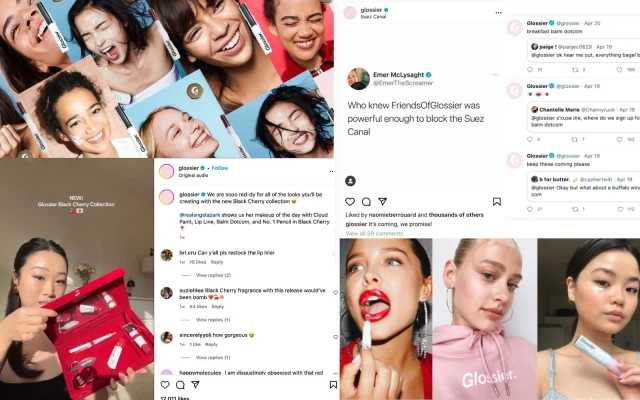
Practical tactics:
- Establish platforms where customers can share experiences and feedback
- Encourage customers to share photos or reviews of your products
- Host webinars, live streams, or Q&A sessions to connect with your audience and build relationships
- Run social media campaigns that encourage users to share their photos or stories using your products
Leverage Subscription Model
Subscriptions reduce friction in the buying process by providing customers with automatic replenishments. In today’s busy world, convenience is key, and subscriptions keep customers engaged by offering convenience, cost savings, and added value.
Dollar Shave Club disrupted the shaving industry by offering an affordable subscription model of $1 a month for razors, which was so compelling it led to rapid growth and eventually a $1 billion acquisition by Unilever, which highlights the power of recurring revenue models.
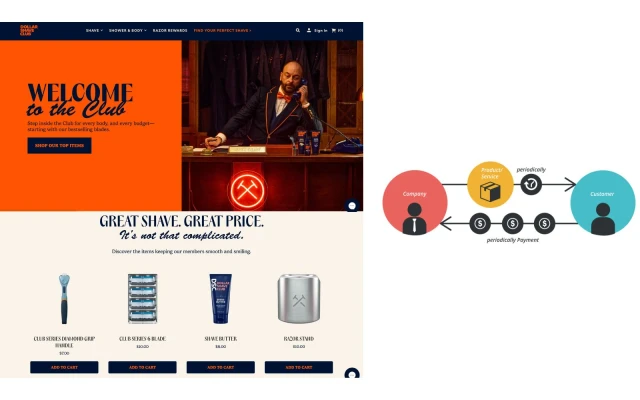
Practical tactics:
- Offer periodic boxes featuring new or exclusive products.
- Provide automatic delivery of regularly used items.
- Allow customers to customize their subscriptions to suit their preferences (monthly, quarterly, annually)
3 Examples of Successful E-commerce Retention Programs
Nike Membership: Community-Driven Retention

Nike, a global leader in athletic apparel and footwear, has developed a robust membership program that significantly enhances customer retention through community engagement.
The Nike Membership program is central to the company’s direct-to-consumer (DTC) approach. It offers members exclusive benefits such as early access to new products, personalized recommendations, and invitations to exclusive events.
Key tactics used to drive customer retention
- Exclusive access: Members receive early or exclusive access to new product launches
- Personalized experiences: Nike utilizes data from its apps to offer tailored recommendations and content
- Community engagement: The program includes access to workout classes, training support, and educational content, fostering a community centered around health and fitness.
Results achieved
- Members reportedly spend approximately three times more than guest customers, indicating higher engagement and loyalty.
- Membership growth has contributed to a 34% increase in digital sales, underscoring the program’s effectiveness in driving online engagement.
- Enhanced customer engagement through the membership program has led to a 16% rise in profits, demonstrating the financial benefits of a loyal customer base.
Amazon Prime: Subscription-Based Model
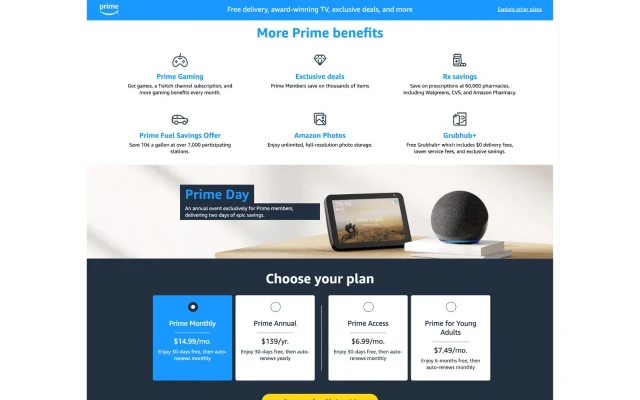
Amazon Prime, launched in 2005, is a subscription-based service designed to enhance customer loyalty that already gathers over 200 million subscribers worldwide by offering a suite of exclusive benefits with a monthly fee of $14.99 or an annual payment of $139.
Key tactics used to drive customer retention
- Expedited shipping: Prime members enjoy free two-day shipping on eligible items
- Streaming services: Membership includes access to Prime Video and Amazon Music, offering a vast library of movies, TV shows, and music, increasing the service’s value proposition.
- Exclusive deals: Members receive special discounts and early access to sales events like Prime Day.
Results achieved
- Amazon Prime boasts a 93% retention rate after the first year and 98% after two years, indicating strong customer satisfaction and loyalty.
- Prime members spend an average of $1,400 annually, compared to $600 by non-members, demonstrating the program’s effectiveness in boosting customer expenditure.
Warby Parker Home Try-On: Seamless Omnichannel Support
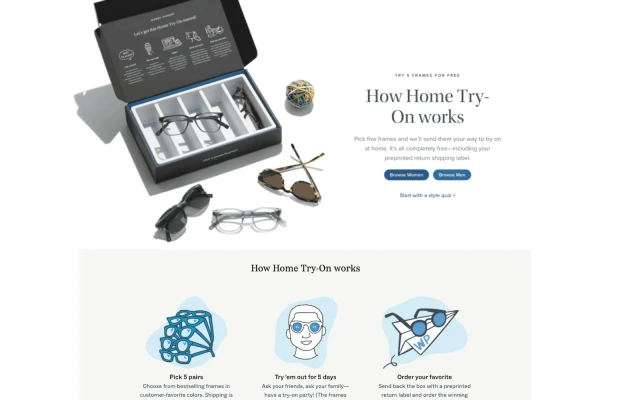
Warby Parker, renowned for its innovative approach to eyewear retail, has significantly enhanced customer retention through its Home Try-On program launched in 2010, exemplifying seamless omnichannel support.
Key tactics used to drive customer retention
- Convenient selection process: Customers can browse an extensive range of frames online, select their preferred styles, and have them delivered to their homes.
- Risk-free trial: The five-day trial period allows customers to try on frames in various settings, consult with friends or family, and make an informed decision without any pressure.
- Seamless return and purchase process: Warby Parker provides a prepaid return shipping label, making the return process straightforward. Customers can easily reorder their chosen frames with prescription lenses through the website or app.
Results achieved: While specific quantitative data on the program’s impact is limited, customer reviews and experiences indicate a high level of satisfaction. Users appreciate the convenience and personalized experience, which has contributed to Warby Parker’s reputation for customer-centric service.
Bottom Line
Remember, ecommerce customer retention is not just about getting customers to buy from you once; it’s about creating an experience that keeps them coming back for more. So, use the strategies and tips in this article to build strong relationships with your customers and watch your business thrive!
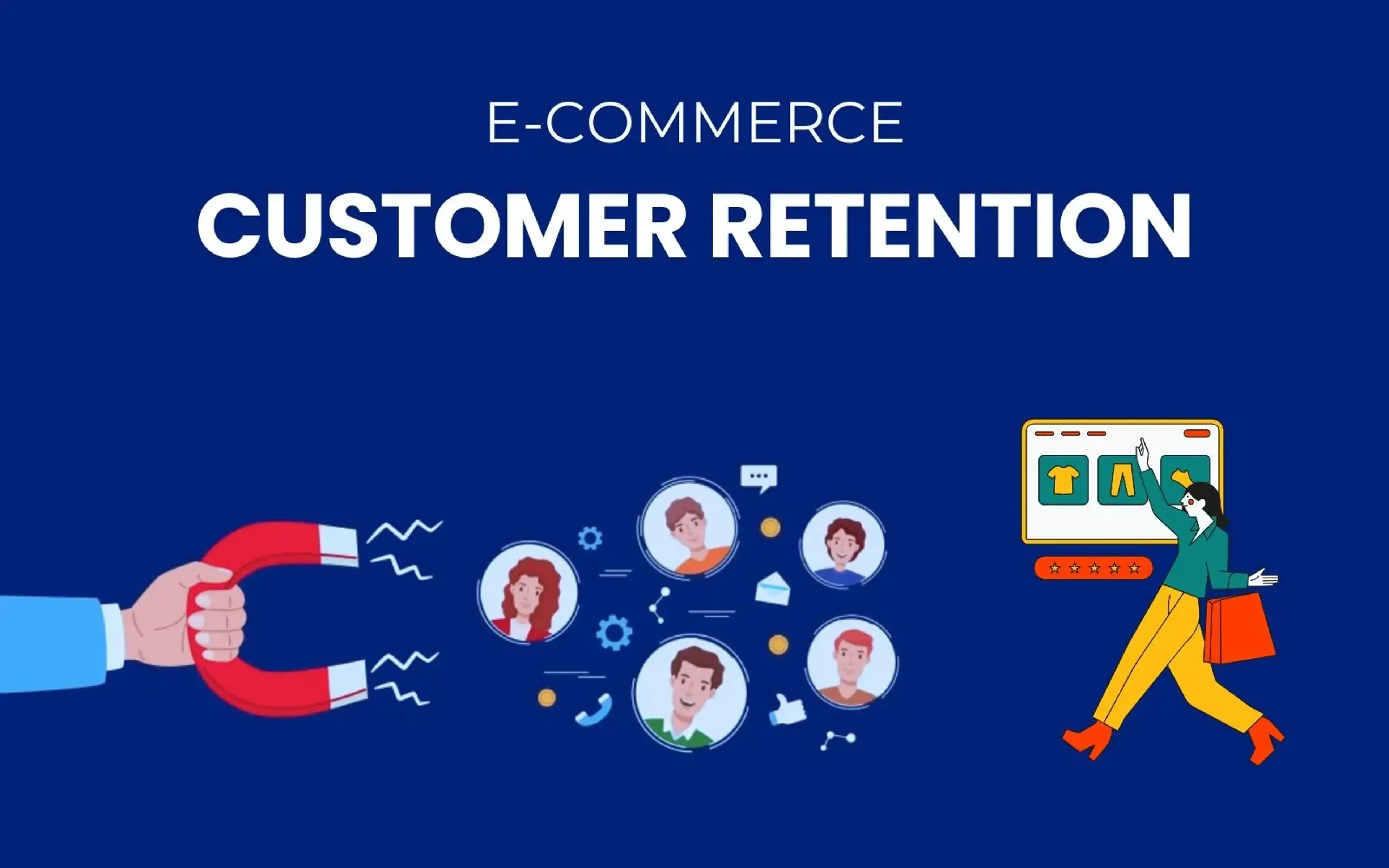


-a7e9a3.png?width=828&q=75&f=webp&auto=format)
